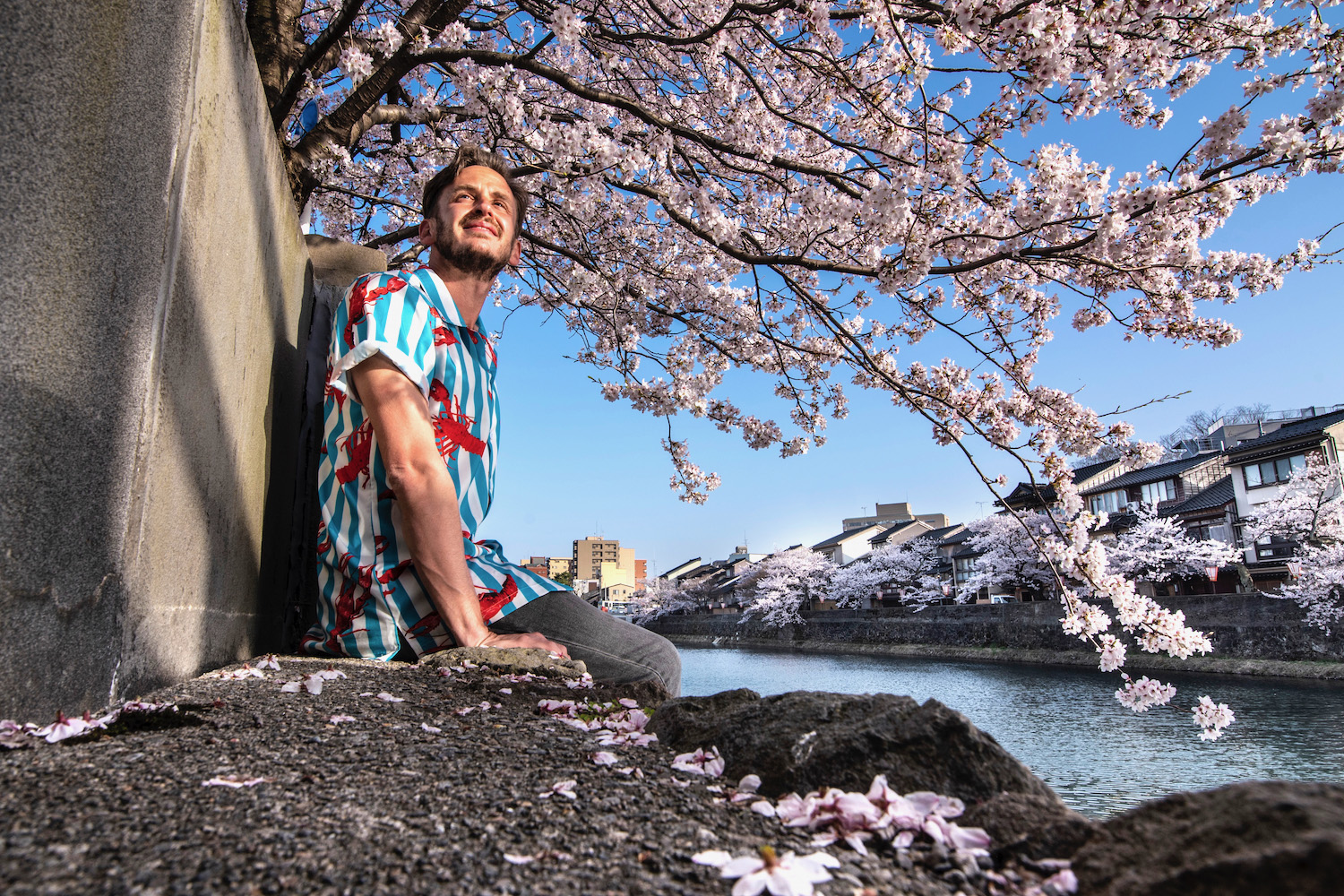A year ago this Friday, I was supposed to have been in Kanazawa, chasing Japan’s cherry blossom front. Instead, I found myself traipsing through an ostensibly Japanese building in Chiayi, which even with sakura would’ve been Taiwan’s least attractive city.
Arriving to Kanazawa Station last Tuesday night I was surprised, given the delayed nature of my gratification, that I didn’t feel more…well, gratified.
Around 10 minutes into my walk down Ekidori, however, just as the closed gates of Omicho Market came into view, a rush of emotion came over me. But not in relation to the trip I canceled in the name of public health—or, more accurately, because I believed my audience and peers would condemn me if I didn’t.
You see, Kanazawa was also the last city I visited during my autumn 2019 trip to Japan, my final one prior to getting locked out for more than a year.
Walking this once-familiar street a changed person—a hardened person, an embittered person—aroused an unexpected shift in me: I felt hope, as opposed to just thinking about it; my mind’s eye saw, for the first time since I accepted the fate of my 2020 hanami trip, a future that transcended pining for a past that never happened.

Wednesday was the warmest morning I’ve ever taken to the streets of Kanazawa, although that isn’t saying much: My previous trips were in November and January. It helped 2021’s case that there was nary a cloud in the sky, that every cherry tree I passed was in perfectly full bloom.
In spite of the newness of these moments, it was impossible not to draw a line back 27 months when I arrived in Kazue-machi, the first part of the city I explored on my official first trip here three Januarys ago.
Then as now, it had been just me and the ornate wooden houses along the Asano River. But this year, instead of a heavy snow that evoked expository scenes from Memoirs of a Geisha, only stray petals blown through the morning breeze fell upon my head as I reacquainted myself with the deserted district.
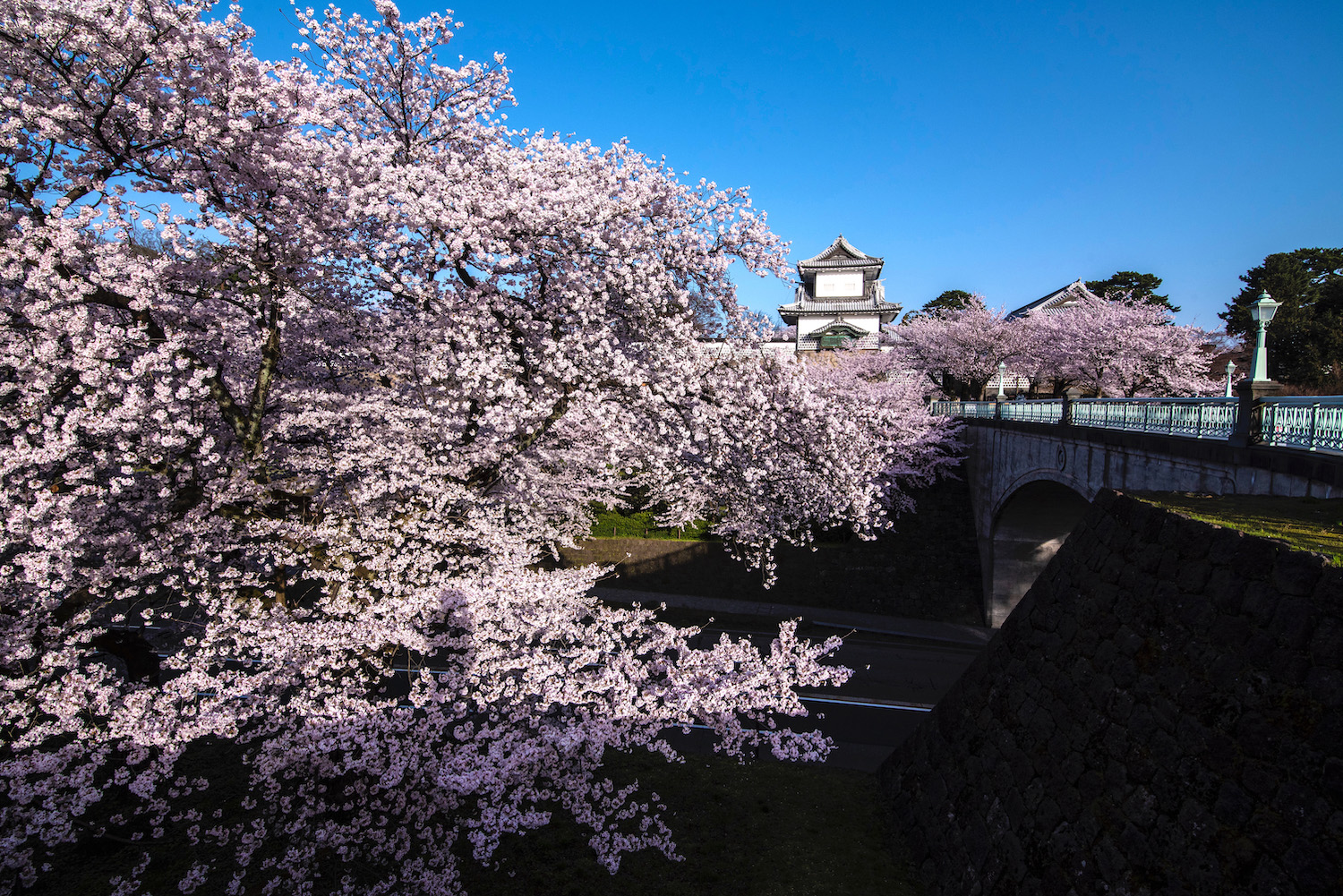
The rest of the morning proved more ambiguous, although that could simply be because of what a high the first hour—Kazue-machi and, then, the entrance to Kanazawa Castle, which was an order of magnitude more impressive than it had been amid the snow or autumn leaves—had given me.
Oddly, it was within the walls of Kanazawa’s most famous attraction—Kenrokuen-en—that I first felt anything approaching disappointment: The snow supports of the garden’s towering pines had been removed.
I understood this, given that winter had clearly long-since passed. However, combined with the surprising lack of cherry trees on the property, the lack of literal and figurative buttresses allowed my mood to sag. Nagamachi Samurai district, my next stop, was also about as far from an ideal hanami spot as you could get.

Rather than dwelling, however, I retreated within as I walked back northward. (Such a lack of presence is safe, if not entirely smart, when you know these streets as well as I now do.)
I dwelt, strangely enough, on the hope I’d felt the day before. My gut was clearer than my head had ever been: The Covid nightmare was going to be over sooner than I could comprehend cerebrally.
With that, my body having by this time moved itself to the east exit of Kanazawa Station, I returned refreshed and reassured to the task at hand: Purchasing gold-leaf covered sweet potato ice cream, the snack I never leave Kanazawa without indulging in.
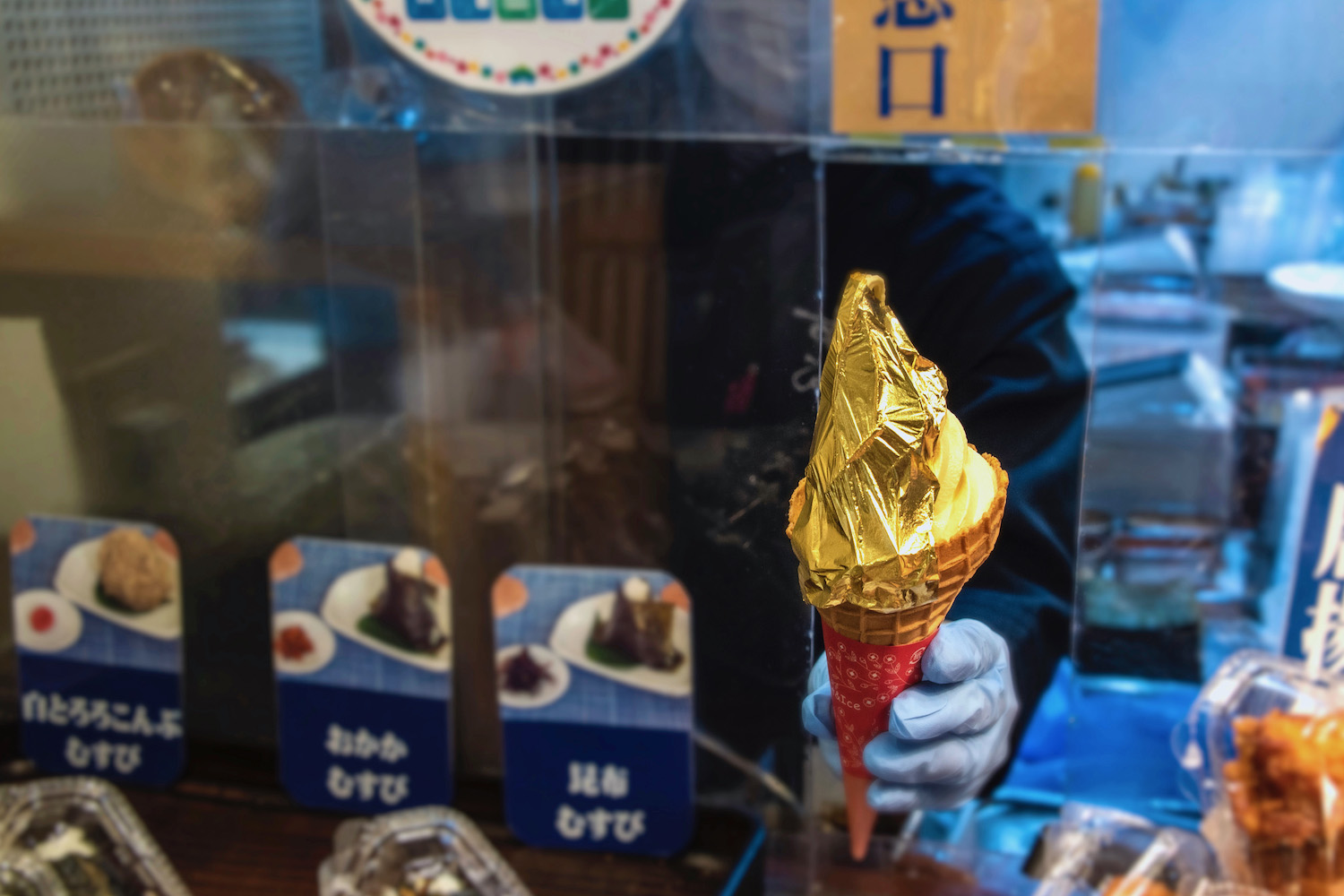
Which is not to say I was on the verge of leaving, at least not permanently. Having rented a car (with only minimal English spoken or heard, I’m proud to say) I was on my way to Maruoka Castle, whose unannounced renovations and lack of color two autumns earlier had made me question the wisdom of my decision to take the expensive day trip there.
I had a feeling, not unlike the hopeful one I have about the future, that this time would be different.
I would end up being half-right. On one hand, the mound the castle sat atop had reached a magnificent mankai; the fullness of the trees and their coverage of the landmass was among the best I’d seen on my trip so far.
On the other hand, I had misgauged where in the sky the sun would be, and by quite a lot. I was almost sure I could adjust for the poor lighting in post-processing, but still self-scolded for most of the time I spent at the oldest of Japan’s original castles, apart from a windswept photo session within its 16th-century tenshu.
The Muzak at a nearby 7-Eleven, as such Muzak tends to do for me in Japan (most recently in Kyushu), sent me the message I needed to hear. It was a mid-tempo, orchestral version of Taylor Swift’s “Shake It Off,” which I recognized not only because of its divergence from the original, but in spite of how few times I’ve intentionally listened to it (or any Taylor Swift song—sorry, not sorry).
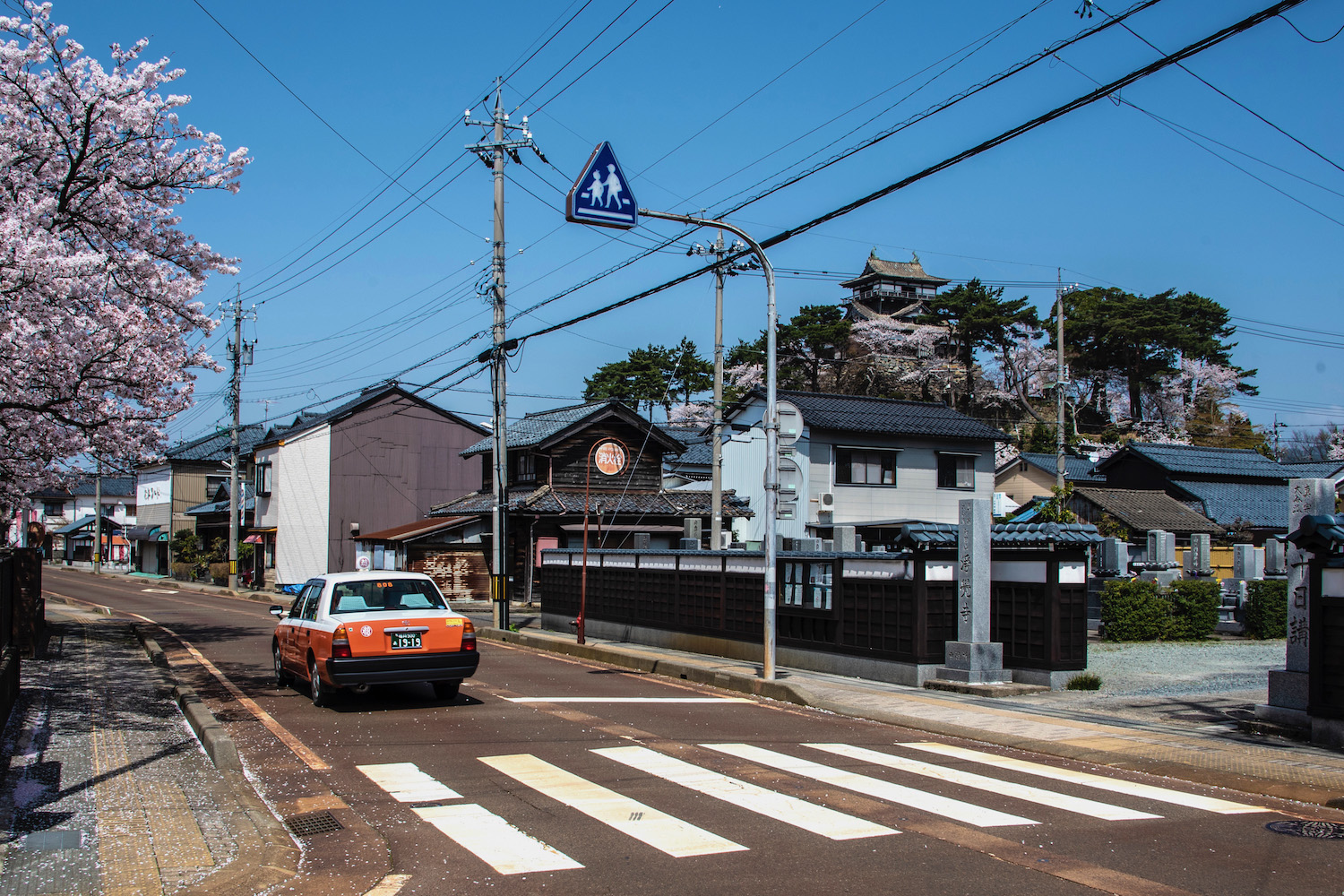
One thing I shook off was my insane plan to drive back east past Kanazawa, in order to move tomorrow morning’s planned day trip to Toyama prefecture. This was as much due to the fatigue I felt—the Red Bull I’d downed upon leaving Maruoka had done nothing—as it was the layer of dust (apparently, like most of the rest of what’s rotten in the world, a gift from China) blocking the Japanese Alps I needed to serve as the background of both the photo shoots I intended to do.
All was not lost, however. I both returned to Kazue-machi to avail the evening light, and made this trip’s first sojourn to Higashi-Chaya, where the sunset (on account of the dust, I exposed) was significantly more colorful than I expected.
The next morning didn’t begin quite as colorfully, at least not in a positive sense. My drive to the Amaharashi Coast ended with a sigh; the mountains behind the pine-covered island (the only thing that differentiates it from any of Japan’s other pine-covered islands) were totally obscured by the Chinese smog.
Thankfully, I could mostly see the mountains behind the tulips and sakura of the Asiago Funakawa Spring Quartet, even if only these two of the four were on display at that moment. I could’ve stayed all morning and missed my train back to Kyoto; instead I took the older Japanese man screaming at me for stepping in his flower bed as a sign that it was time to move on.
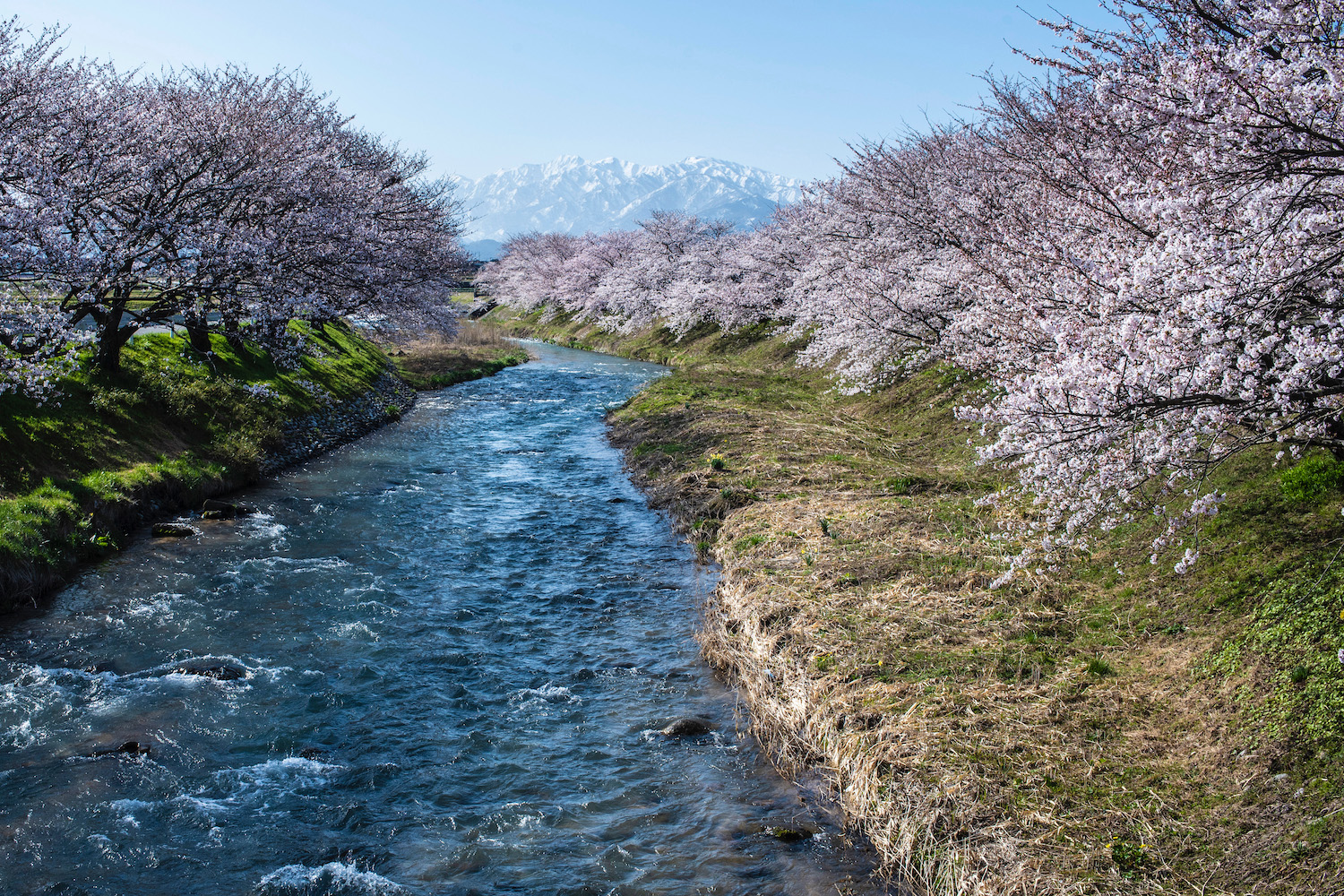
Signs, symbols, feelings—these are words I usually don’t fuck with, given my irreligious nature, and my aversion to spirituality in my heart of hearts.
Yet we live in a medieval period of modern history, one where signs (or rather signals—wearing a mask in your own car by yourself, for example, or in the middle of an open tulip field at the base of snow-covered mountains) have substituted for evidence, facts and logic. Oddly, the most rational way to approach life these days is without much regard at all to rationality.
Indeed, it is the psychic pull (or the spiritual one, if that gets you off) with the last normal months of my past on me, right now, that convince me a future-normal is so close at hand.
The sullen stroll though Chiayi Park, as the sun (hidden behind the same sort of smog choking the sky now) set unbeknownst to me, a year ago this Friday. Being pushed onto a jam-packed Ginza Line train, maskless, just six weeks before the first Covid-19 case would be detected in Japan, and less than three months before the world as we knew it shut down.
We will know that world again.
Other FAQ About Kanazawa Cherry Blossoms
Where is the cherry blossom in Kanazawa?
Cherry blossoms are present at all of Kanazawa’s major tourist attractions. These include along the Asano River in Kazue-machi Geisha district, within Kenroku-en garden and Kanazawa Castle and throughout the Nagamachi Samurai district.
What month is cherry blossom in Kanazawa 2023?
In a normal year, cherry blossoms reach full bloom between the 6-8 of April; if the 2022-2023 winter is normal, this should hold true in 2023. Keep in mind, however, that Kanazawa’s cherry blossoms reached their peak beauty on April 1, 2021, an entire week earlier than normal.
How can I get to Maruoka Castle from Kanazawa?
Although you can use a combination of train and bus/taxi to reach Maruoka from Kanazawa, the most efficient way to get there is to rent a car and drive. This may sound cumbersome or expensive, but trust me: You’ll thank me later.



